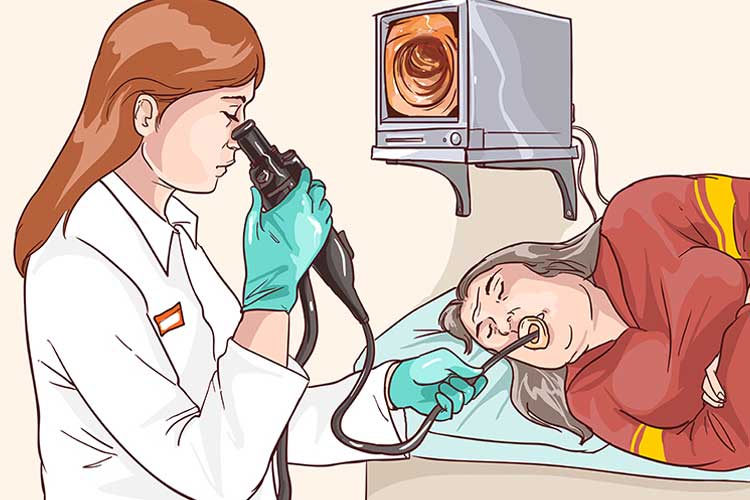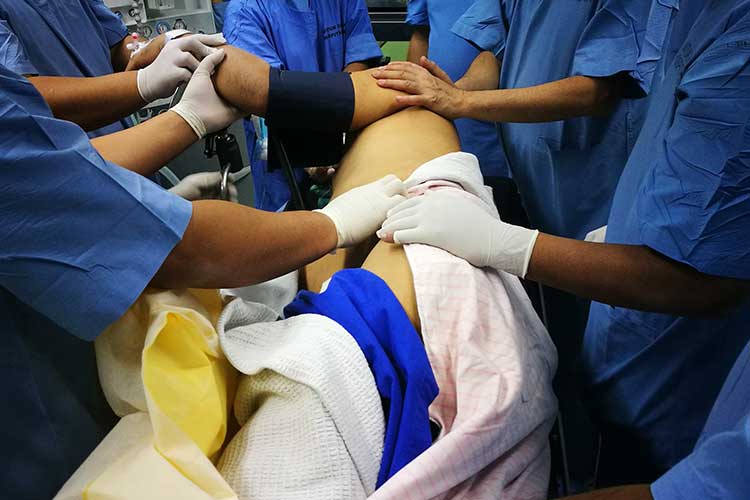Obesity is not only a growing epidemic in the general population, with 67% of Australian adults overweight or obese (AIHW 2023) - it’s increasingly becoming an issue within perioperative practice.
Whilst there is often a BMI limit for day case surgery and minor procedures, the fact remains that on the whole, our patients are getting larger across all surgical disciplines, and there are extra considerations we need to be aware of within the operating theatre department.
Although BMI is not an ideal measure of risk, it is the most useful of the currently available markers and is a simple measure to apply (Shmerling 2023). However, it shouldn’t be used as a sole indicator of surgical suitability - or risk.
Preoperative Assessment
Where possible, a thorough preoperative assessment is crucial to establish the size and weight of the patient and enable the relevant equipment and precautions to be put in place. It can also establish:
- Airway limitations
- Bruising and pressure injury risk
- Joint and mobility issues
- Obstructive sleep apnoea - a strong indicator of airway complications
- Underlying heart disease and associated co-morbidities, such as hypertension
- Diabetes and insulin resistance.
Early communication between the interprofessional team involved with caring for the larger patient is essential. One aspect of preoperative assessment is using the acquired information to schedule the surgery for when there are sufficient personnel, resources and additional time available. This includes postoperative care on the ward (Nightingale et al. 2015).
Larger patients are also at greater risk of difficult or failed intubation, which may lead to further intraoperative complications requiring intensive care admission (Nightingale et al. 2015; Jong AD et al. 2015).
Along with a BMI greater than 30 and a Mallampati score of 3 or 4 being indicative of a difficult airway, neck circumference has also been shown to correlate with risk. A neck circumference of over 42 cm is an independent predictor of difficult intubation (Wang et al. 2018; Riad et al. 2016).
Although measuring a patient’s neck might not be appropriate, a reasonable estimate can be made on sight and used as guidance when determining anaesthetic induction and intubation. Due to difficulty in ventilating larger patients and the increased risk of pulmonary aspiration, most larger patients will be intubated rather than relying on bag and mask ventilation or laryngeal mask airways.

Where there is a difficult airway, an awake fibre-optic intubation may be necessary rather than a conventional bag and mask induction. This can be stressful for an anxious patient, so it’s important to consider the risk of difficult intubation and how this will be approached with the entire anaesthetic team.
Involving the patient as much as possible in all decisions is a good way of managing risk and preventing potential complications due to stress or anxiety.
Communication with the patient regarding intubation complications is essential before they arrive in the operating theatre suite.
Correct Equipment and Use
Correct equipment and usage are essential with the larger patient. A 2011 review of incidents reported to the National Patient Safety Agency (UK) highlighted that many of the cases referred were due to inadequate provision of suitable equipment for larger patients. Particular equipment necessary for the care of the larger patient (according to Nightingale et al. 2015) may include:
- Bariatric operating table, able to incorporate arm boards and table extensions, attachments for positioning such as leg supports for the lithotomy position, and shoulder and foot supports
- Gel pads and padding for pressure points
- Wide Velcro strapping to secure the patient to the operating table
- Ramping device/pillows
- Raised step for the anaesthetist
- Large tourniquets
- Large blood pressure cuff for accurate BP monitoring
- Readily available difficult airway equipment
- Anaesthetic ventilator capable of positive end-expiratory pressure and pressure modalities
- Portable ultrasound machine
- Hover-mattress or slide sheet
- Long spinal and epidural needles
- Long arterial lines if femoral access is necessary
- Neuromuscular blockade monitor
- Depth of anaesthesia monitoring to minimise residual sedation.
Careful handling of a larger patient is crucial to prevent injuries to staff. Available equipment should be used correctly, and all staff involved with the patient must have undergone appropriate training. Mandatory training should include larger patient handling techniques. Sometimes, it might be necessary to induce anaesthesia in the operating theatre, enabling the patient to move themselves on to the operating table rather than compromising staff safety.
Patient Positioning
Patient positioning is about more than just ensuring good surgical access, and should be considered and discussed with the team long before the patient arrives in the operating theatre.
Supine positioning is tricky for larger patients, as it can make respiration difficult as well as compress the inferior vena cava and impede normal blood flow. Elevating the back, where possible, can alleviate this. The prone position carries the same problems along with compression of the diaphragm, making ventilation extremely difficult.
Although lateral positioning is the least problematic for larger patients, it’s also the least favourable for many surgical procedures. It’s important that you use common sense when positioning the patient and ensure that both the anaesthetist and lead surgeon have seen the positioning, supports and additional devices used before the procedure commences. Everything used should be accurately documented.

Risk Factors
Every patient is at risk of developing complications from poor patient positioning and support, but the risk is greater with obese patients. Complications can include:
- Pressure necrosis of skin and underlying tissue
- Peripheral nerve injury
- Back and joint pain
- Reduced circulation
- Compartment syndrome.
(Abdominal Key 2018; Ravula & Zagaynov 2023)
Adequate padding is therefore essential, as the extra weight carried by the patient puts more pressure on the areas of skin that the operating table and other equipment come into contact with.
An additional gel pad over the table can be of immense benefit, as can using a larger patient-specific table where there’s one available - although most operating tables can safely accommodate up to 500 lbs without losing functionality.
It’s worth noting that gel padding and supports are better for larger patients than their foam alternatives. This is because the foam can be easily compressed and lose its supportive structure.
Whilst care of the larger patient is often undertaken with some trepidation, it can’t be denied that patient size is generally on the increase. Rather than the occasional need for additional awareness, equipment and understanding, it’s becoming the norm to care for larger patients in all areas of anaesthesia, surgery and post-anaesthetic care.
Appropriate training and understanding are essential if unwanted complications are to be avoided.
Topics
References
- Abdominal Key 2018, Complications of Patient Positioning, Abdominal Key, viewed 10 August 2023, https://abdominalkey.com/complications-of-patient-positioning/
- Australian Institute of Health and Welfare 2023, Overweight and Obesity, Australian Government, viewed 9 August 2023, https://www.aihw.gov.au/reports/overweight-obesity/overweight-and-obesity/contents/about
- Jong, AD et al. 2015, ‘Difficult Intubation in Obese Patients: Incidence, Risk Factors, and Complications in the Operating Theatre and in Intensive Care Units’, Br J Anaesth., vol. 114, no. 2, viewed 11 August 2023, https://pubmed.ncbi.nlm.nih.gov/25431308/
- National Confidential Enquiry into Perioperative Outcome and Death 2011, Peri-operative Care: Knowing the Risk, NCEPOD, viewed 10 August 2023, https://www.ncepod.org.uk/2011poc.html
- Nightingale, CE et al. 2015, ‘Peri‐operative Management of the Obese Surgical Patient 2015’, Anaesthesia, vol. 70, no. 7, viewed 9 August 2023, https://www.ncbi.nlm.nih.gov/pmc/articles/PMC5029585/
- Ravula, N & Zagaynov, C 2023, Patient Positioning: Physiologic Effects, OpenAnesthesia, viewed 10 August 2023, https://www.openanesthesia.org/keywords/patient-positioning-physiologic-effects/
- Riad, W 2018, ‘Neck Circumference as a Predictor of Difficult Intubation and Difficult Mask Ventilation in Morbidly Obese Patients: A Prospective Observational Study’, European Journal of Anaesthesiology, vol. 33, no. 4, viewed 9 August 2023, https://journals.lww.com/ejanaesthesiology/fulltext/2016/04000/Neck_circumference_as_a_predictor_of_difficult.5.aspx
- Shmerling 2023, ‘How Useful is the Body Mass Index (BMI)?’, Harvard Health Publishing, 5 May, viewed 9 August 2023, https://www.health.harvard.edu/blog/how-useful-is-the-body-mass-index-bmi-201603309339
- Wang, T, Sun, S & Haung, S 2018, ‘The Association of Body Mass Index With Difficult Tracheal Intubation Management By Direct Laryngoscopy: A Meta-Analysis’, BMC Anesthesiology, vol. 18, no. 79, viewed 9 August 2023, https://bmcanesthesiol.biomedcentral.com/articles/10.1186/s12871-018-0534-4
 New
New 
